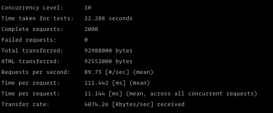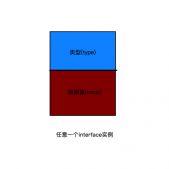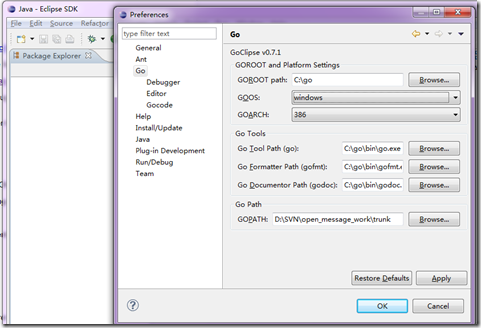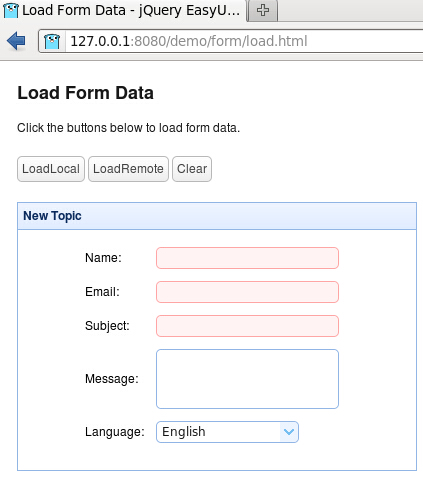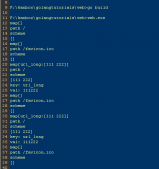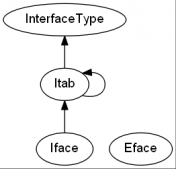我就废话不多说了,大家还是直接看代码吧~
|
1
2
3
4
5
6
7
8
9
10
11
12
13
14
15
16
17
18
19
20
21
22
23
24
25
26
27
28
29
30
31
32
33
34
35
36
37
38
39
40
41
42
43
44
45
46
47
48
49
50
51
52
53
54
|
package mainimport ( "fmt" "reflect" "testing")type Call struct { Num1 int Num2 int}func (call Call) GetSub(name string){ fmt.Printf("%v 完成了减法运算,%v - %v = %v \n", name, call.Num1, call.Num2, call.Num1 - call.Num2)}func (call *Call) GetSum(name string){ fmt.Printf("%v 完成了加法运算,%v + %v = %v \n", name, call.Num1, call.Num2, call.Num1 + call.Num2)}func TestReflect(t *testing.T) { var ( call *Call rValues []reflect.Value rValues2 []reflect.Value ) ptrType := reflect.TypeOf(call) //获取call的指针的reflect.Type trueType := ptrType.Elem() //获取type的真实类型 ptrValue := reflect.New(trueType) //返回对象的指针对应的reflect.Value call = ptrValue.Interface().(*Call) trueValue := ptrValue.Elem() //获取真实的结构体类型 trueValue.FieldByName("Num1").SetInt(123)//设置对象属性,注意这个一定要是真实的结构类型的reflect.Value才能调用,指针类型reflect.Value的会报错 //ptrValue.FieldByName("Num2").SetInt(23) trueValue.FieldByName("Num2").SetInt(23) //rValues = make([]reflect.Value, 0) rValues = append(rValues, reflect.ValueOf("xiaopeng"))//调用对应的方法 fmt.Println(rValues) trueValue.MethodByName("GetSub").Call(rValues) /* fixme 在反射中,指针的方法不可以给实际类型调用,实际类型的方法可以给指针类型调用,因为go语言对这种操作做了封装 所以下面一句是没问题的 下下一句会运行时报错 */ //ptrValue.MethodByName("GetSub").Call(rValues) //trueValue.MethodByName("GetSum").Call(append(rValues2, reflect.ValueOf("hiram"))) ptrValue.MethodByName("GetSum").Call(append(rValues2, reflect.ValueOf("hiram"))) fmt.Println(call) /* fixme 在实际使用中 指针和实体都能相互转换,不会影响调用 但是指针的方法在方法体内的操作会影响到结构体本身属性 而实体的方法不会,因为go对于结构体、数组、基本类型都是值传递 */ call.GetSub("aaa") (*call).GetSub("bbb") call.GetSum("ccc") (*call).GetSum("ddd")} |
补充:golang 反射 reflect 设置 struct 字段
说明1 reflect.Value区分CanSet和Can not Set
所以, 必须要返回成Can set的reflect.Value
如:
|
1
|
s := reflect.ValueOf(&t).Elem() |
然后就可以happy的设值了, 可是不能随便设值的, 一个通用的方法就是使用Set(v Value)方法,
说明2 将值转成reflect.Value类型
下面的这段代码就是转成Value类型
|
1
|
sliceValue := reflect.ValueOf([]int{1, 2, 3}) // 这里将slice转成reflect.Value类型 |
说明3 reflect.ValueOf 参数必须是一个 指针 或 interface Elem()才可以正常调用
func (Value) Elem func (v Value) Elem() Value
Elem returns the value that the interface v contains or that the pointer v points to. It panics if v's Kind is not Interface or Ptr. It returns the zero Value if v is nil.
Elem返回接口v包含的值或指针v指向的值。 如果v的Kind不是Interface或Ptr,它会感到恐慌。 如果v为零,它将返回零值。
实例代码
代码1:
|
1
2
3
4
5
6
7
8
9
10
11
12
13
14
15
16
17
18
19
20
21
22
23
24
25
26
27
|
func Destroy(subj interface{}) { stype := reflect.ValueOf(subj).Elem() field := stype.FieldByName("Status") if field.IsValid() { field.SetString("Destroyed") }} func TestDestroy(t *testing.T) { // Initialize data jaeger := Jaeger{Name: "Cherno Alpha", Country: "RU", Status: "Active"} kaiju := Kaiju{Alias: "Scissure", Origin: "Sydney", Status: "Unknown"} shatterdome := Shatterdome{Location: "Lima"} // Destroy everything Destroy(&jaeger) Destroy(&kaiju) Destroy(&shatterdome) // Check the result if jaeger.Status != "Destroy" { t.Error("jaeger was not destroyed") } if kaiju.Status != "Destroy" { t.Error("kaiju was not destroyed") }} |
代码2:
|
1
2
3
4
5
6
7
8
9
10
11
|
type T struct { Age int Name string Children []int}t := T{12, "someone-life", nil}s := reflect.ValueOf(&t).Elem() s.Field(0).SetInt(123) // 内置常用类型的设值方法sliceValue := reflect.ValueOf([]int{1, 2, 3}) // 这里将slice转成reflect.Value类型s.FieldByName("Children").Set(sliceValue) |
以上为个人经验,希望能给大家一个参考,也希望大家多多支持服务器之家。如有错误或未考虑完全的地方,望不吝赐教。
原文链接:https://www.cnblogs.com/hirampeng/p/11204475.html



